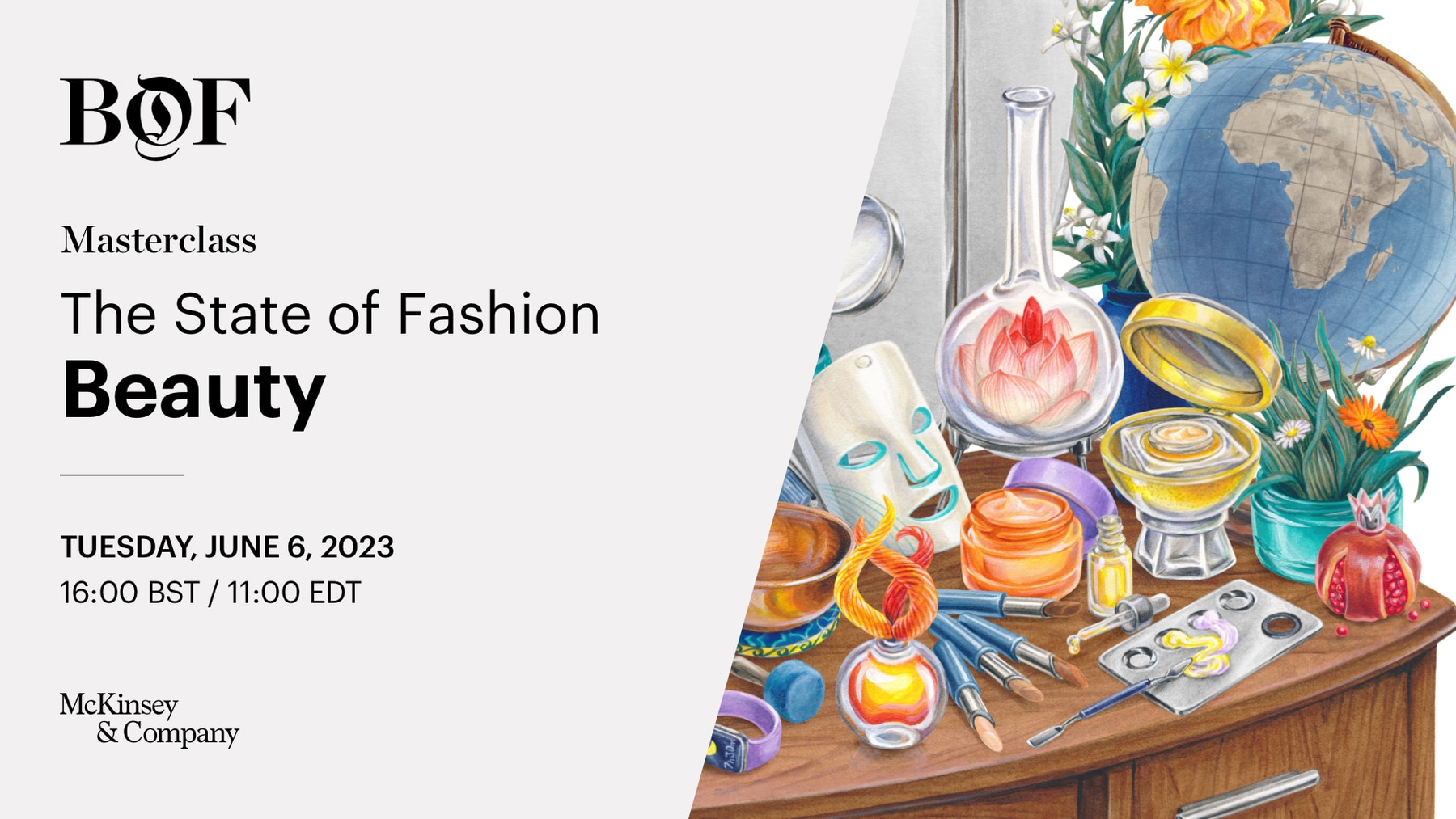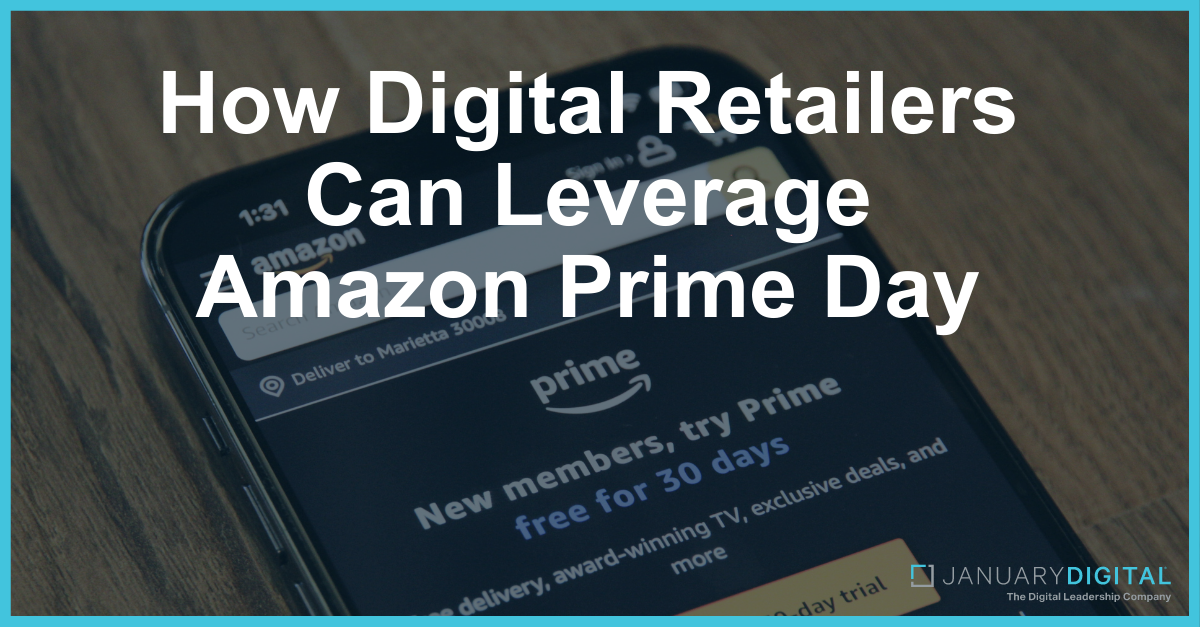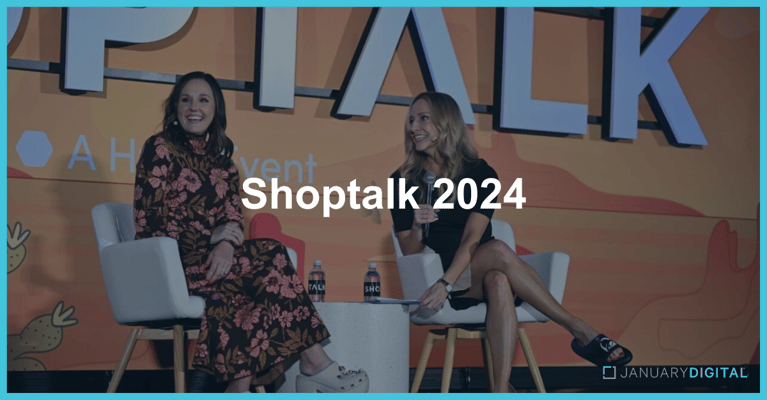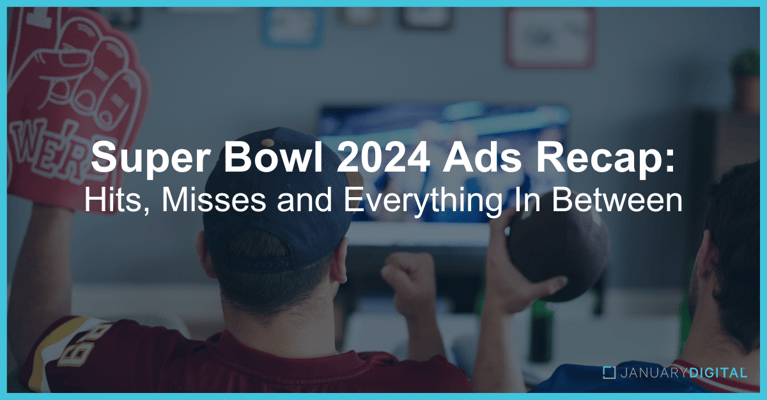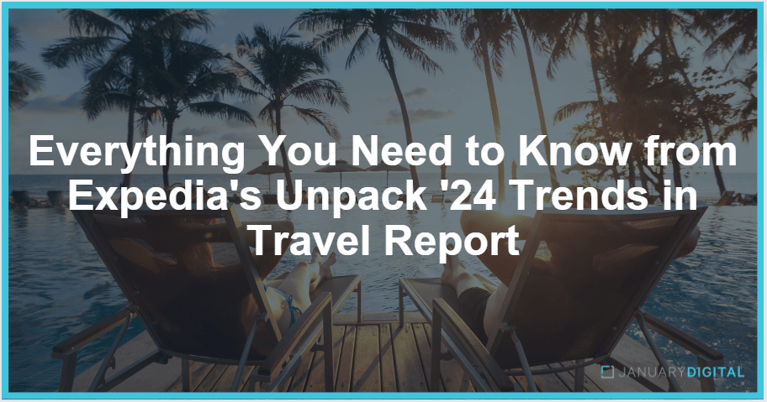The age of AI has come to Meta, and the director of our Subject Matter Expert Team, Jared Smith, offers analysis of what advertisers need to know in order to succeed with Meta through end of year.

Key Insights
- Meta sees the future of marketing as heavily influenced by AI, and they are investing in enhancing foundational models and releasing AI-based tools for improved ad targeting and creative development.
- Holistic media measurement and validation methods, including lift tests, MMMs, and A/B testing, are emphasized to understand performance across an advertiser's business.
- Creative differentiation is a key driver for targeting success, with a diverse creative mix improving CPA and reach. Generative AI will play a significant role in creative production.
Meta has had a flurry of announcements and releases in the past few weeks, including at the Meta Performance Marketing Summit (held on June 6th). Amongst the flurry of PR language, there are some key features that will truly impact how advertisers plan, measure and perform in the year ahead:
AI-Driven Marketing and Automation: The integration of artificial intelligence (AI) and automation in Meta's marketing and advertising processes was a key theme throughout the day. AI is instrumental in enhancing advertising capabilities, improving targeting, and developing new tools. The Advantage+ suite, which employs AI for optimizing ad formats and audiences is seeing enhancements. Meta is also focused on facilitating AI's role in creative content generation.
Measurement and Validation: There was an emphasis on the importance of media measurement and adopting a holistic (360-degree) approach to understand performance across an advertiser's business. Lift tests, MMMs, A/B testing, and other methodologies for results validation and performance optimization were highlighted throughout the day.
Marketing to Gen Z: The importance of understanding and effectively engaging with Gen Z was a reoccurring theme. The role of creators, Instagram, Reels, short-form videos, and value alignment is key for success in this segment.
Creative as a Key to Targeting: Creative differentiation drives performance, with a diverse creative mix improving CPA and reach. Generative AI will soon be a core tool for creative production and extending creative content with things like AI-generated headlines.
Future of Performance Marketing: AI will largely influence the future of marketing. Meta is investing in enhancing their foundational models and releasing AI based tools for improved ad targeting and ad creative development.
Innovation in Ad Formats and Audience Targeting: New creative formats like local inventory ads, Reels enhancements, multi-destination product ads and partnership ads were announced. Along with new ways of audience targeting, such as interest selection guiding AI targeting, geo-exclusions and minimum age targeting for ASC, and persona-driven creative.
Beyond the key themes, our team onsite at the Meta Performance Marketing Summit have outlined deeper content topics and what they mean to retailers and brands:
An Inside Look: Performance Product Roadmap
Put Meta’s AI to work with the Advantage+ suite of products.
- Businesses using creative standard enhancements are seeing +14% incremental conversions average.
- Advantage+ Audiences are rolling out later this year providing a more effective way to use interest targeting. Interest selection will guide who the AI targets vs. solely target users in those specific interest groups.
- Advantage+ Catalog ads will be updated to include video creative. Meta’s AI will determine if static or video is mostly likely to get a user to convert and then will serve the format deemed most effect for each individual user.
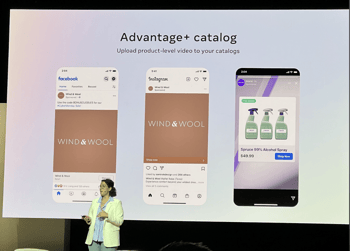
- New local inventory ads will be here before Q4. These will be AI powered catalog ads showing video or static images of products that are in stock at a user’s local store.
- A range of enhancements are coming to Reels:
- Creative enhancements for images and non 9x16 ads.
- Music optimization will be easier as advertiser can add over 10M free songs from Meta’s library.
- Larger call-to-action buttons on Reels ads.
- Watch and browse is a new way for users to engage. They can pause on ad and view the advertiser’s website.
- Multi-destination product ads are also on the horizon. Users can look at various products during a Reels video and go directly to the PDP.
- Advantage+ Shopping campaigns are the core for always on performance strategies.
- New targeting features are coming to ASC+:
- Minimum age targeting – A minimum age between 18 – 25 can be applied.
- Geo exclusions – Geos can be excluded at the state level.
- Shops as a destination for ASC+ campaigns have been fully rolled out.
- When Checkouts are enabled, you can allow Meta’s AI to direct users to either an advertiser’s Shop or website. Wherever a user is most likely to convert.
- On average businesses that add shops as a destination are seeing a 20% lift in ROAS and 20% improvement in CPA.
- Additional new ad formats are in the pipeline and will be released this year.
- Partnership Ads will be simplifying the Branded Content solution making it easier for brands and creators to collaborate.
- Lead Generation objectives are going to see an update with Conditional Forms. Advertisers will be able to customize the form to change based on user response.
- Promotional Ads that can create reminders for users about promo offers are being tested.
Unlocking Growth with Measurement
Innovate with your media measurement to drive profitable business growth.
-
- There is no one-size-fits-all tool for understanding performance across an advertiser’s full business.
- Over the years media measurement has evolved from a standard “nuts and bolts” process to an area where you must apply a range of custom solutions.
- Adopt a Measurement 360 approach by utilizing multiple methodologies and data sources.
- A 360-degree measurement approach can help businesses use multiple measurement solutions in a connected framework to track all components of a marketing strategy.
- Apply a lens of incrementality to everything you do and use experiments to calibrate other measurement methodologies.
- Always on conversion lift tests in combination with MMMs have been key to advertisers proving performance of upper funnel media and fine tuning their media mix.
The Performance 5 Framework: Strategies for Growth
- As Meta continues to advance its advertising systems, in response to increasing limitations on user data, they have shared updated guidelines to maximize the campaign effectiveness.
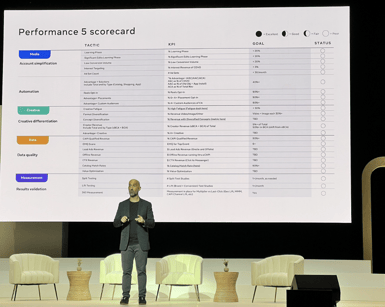
- Below is a breakdown of the Performance 5 framework:
- Simplify your account.
- Meta emphasizes that account simplification is at the core of their Performance 5 approach. The more simplified your account the stronger the signals.
- This simplification aids in streamlining the ad learning phase, allowing advertisers to achieve optimal results.
- By adopting a simplified ad structure, advertisers enable Meta's system to identify performance trends more accurately, resulting in maximized outcomes.
- Advertisers that spend less than 20% of their time in the learning phase on average see 68% more favorable CPAs.
- Use automation tools.
- Meta's Advantage+ suite offers advanced automation tools that leverage the power of Meta's AI systems. These tools utilize algorithmic analysis to identify trends and response patterns, enabling precise targeting of ads.
- Advertisers who have embraced Meta's automation tools have observed over 2x incremental purchases.
- By utilizing these tools, advertisers provide Meta's systems with greater capacity to display ads to targeted audiences.
- Differentiate your creative.
- Variation in creative is a key performance driver. Advertisers should create multiple iterations of their creative elements to maximize performance. This approach enables the delivery of tailored and relevant messages to specific audiences.
- By continuously developing and refining ad creative, marketers can leverage creativity as a novel targeting strategy. This involves crafting distinct messages that align with diverse customer needs and interests.
- To maximize reach and resonance, Meta suggests diversifying ads by concept, message, visuals, and considering different ad types.
- Fighting creative fatigue and reducing repeated exposure is another benefit of differentiating creative. At four repeated exposures the associated likelihood of a conversion drops by about 45%.
- Data quality.
- CAPI is the foundation for everything performance on Meta. Implementation is only the first step though. Data must be optimized to improve quality.
- This ensures accurate identification of Meta accounts that complete specific actions. Marketers can maintain high-quality event matching by focusing on the following areas: event match quality, redundancy, deduplication and data freshness.
- Despite the reduced data being fed into Meta's system, it is crucial for advertisers to leverage the available data, with the Conversions API serving as a vital bridge in this regard.
- Results validation.
- Businesses who run 15 experiments in a given year to determine their strategies will see about 30% higher ad performance that year compared to a business that ran no experiments.
- Conversion Lift should be used to assess the performance of ads in tandem with MMM to quantify the value of the results.
- A/B testing should be used to compare the effectiveness of different strategies.
- By leveraging these comparative data tools, advertisers can gain valuable insights into the relative performance of their ads and campaigns can be optimized accordingly.
- Outside of the Performance 5 framework there are a few other advanced areas advertisers can focus on optimizing.
- Site speed is vital for all media performance.
- Expanding to new audiences by moving targeting up the purchase funnel.
- Testing bid multipliers to push more impression volume into designated demographics.
Gen Z and the New Rules of Discovery
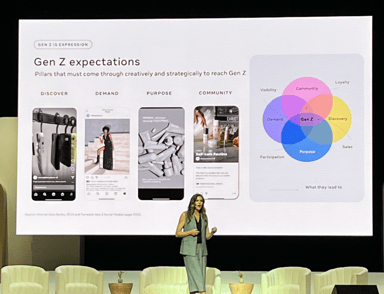
- Gen Z is the largest group of consumers and will make up 40% of the luxury retail market in the next three years.
- Gen Z is driven by technology and is leading a cultural shift.
- Creators play a significant role for Gen Z, as they spend 14x more time with creator content than brand content.
- Instagram is a preferred platform for Gen Z, with its features like stories and highlights as avenues for providing alternative content.
- Short-form videos and Reels are as important as TV spots for Gen Z. Half the content Gen Z consumes is short form video.
- Be strategic about where to use creators. When overused they lose value. Use them as accelerators in specific instances.
- Partnership ads are key for success, and utilizing tools like the creator marketplace can be beneficial.
- Brands should align their values with creators and give them creative freedom for authenticity.
- Brands seeing success with creators and Gen Z include Marc Jacobs, Sweet Greens, Ritz Carlton in Paris, Poppi, and Victoria's Secret.
- Key takeaways: Speak Gen Z's language, be customer-obsessed, and tap into internal Gen Z employees for insights.
Creative is the New Targeting
- Creative differentiation drives performance with advertisers seeing 32% improvements in CPA and 9% increases in incremental reach by deploying a diverse creative mix.
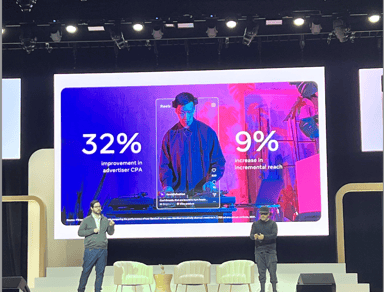
- The more creative put into the system the more it can expand audiences by giving the AI the messaging needed to go out and serve it to the right people at the right time.
- Generative AI will assist in scaling human creativity and production of creative.
- Some advertisers plan to gradually incorporate generative AI in creative, starting with resizing and product tagging in ads.
- Copy generation is another area advertisers are already leaning into AI by generating additional headlines to extend creative content.
- When using broad targeting, creative becomes the primary targeting tool. Persona-driven creative can guide targeting.
- Robust naming conventions must be utilized for reporting and gaining insights.
- Diverse content sources, including UGC, creators, and stills, are essential for success.
AI and the Future of Performance Marketing
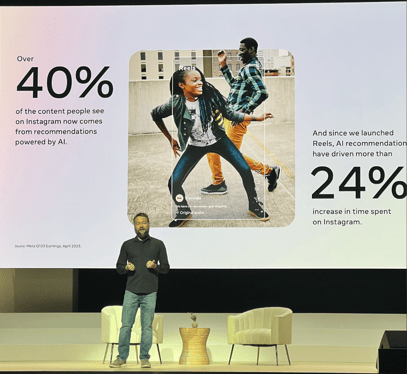
- At the core of the foundational infrastructure Meta has switched from CPUs to GPUs leading to improved AI capabilities, enabling better ad targeting and facilitating the development of new AI tools.
- The Meta Lattice model allows the AI to consider multiple goals at once, leading to enhanced performance and efficiency across the board.
- The AI Sandbox introduces new AI improvements, including generative AI for ad creative.
- Creative text variation enables advertisers to quickly generate a wide range of personalized ad copy for improved results.
- Background generation allows advertisers to test various backgrounds to enhance product visibility.
- Image Outcropping will adjust your visuals to fit different aspect ratios across multiple surfaces, like Stories or Reels.
Meta’s CMO on the Future of Marketing
- Retention is crucial for growth, supported by effective analytics and understanding platform dynamics.
- The future is unevenly distributed, with some benefiting from new channels and technologies, and others behind the adoption curve.
- Don't neglect the basics; shiny new things should align with the business and connect back to fundamental principles.
- Being ROI positive in marketing is vital during uncertain economic times.
- Continuous experimentation and validation of results are necessary, with a focus on agility.
- The industry's pace of change is accelerating, requiring quick testing and adoption.
- The Metaverse is seen as a real concept, with Apple's VR product validating it, albeit primarily among young individuals in the West.
- AI chat bots are already prevalent in chat-focused countries and will expand to the West.
- AI will enable highly personalized creative experiences for individuals.
While AI took center stage, the measurement and creative options that have shifted will provide a stronger platform for all advertisers relying on Meta to reach consumers. As shifts continue, we will continue to provide up-to-the-minute analysis to help guide advertiser effectiveness.






